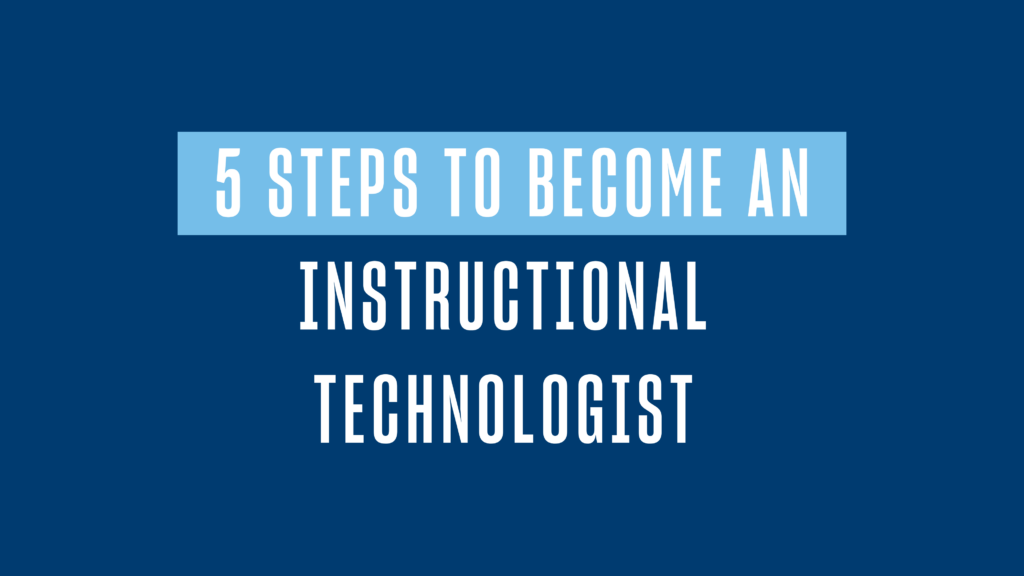Instructional designers (IDs) are in high demand across all industries, with many reporting an “increased need for support in training, performance improvement, online learning, integration of technology into instruction, and the application of appropriate pedagogy” (Nworie, 2021). Independent researcher John Nworie found that 54.8% of reviewed instructional design job listings came from higher education, and 45.2% came from corporations and other private entities. Across the board, IDs are needed to “improve employee performance as well as the quality of services or products in business, industry, government, military, and healthcare” and are highly valued for improving “teaching and learning in online and classroom environments in educational organizations.”
With such a great need within this growing field, prospective IDs must have various skills. They must specialize in designing courses and training programs and be flexible in filling different roles in creating instructional materials and implementing learning experiences. If you’re pursuing a career as an ID, here are the core skills that every employer will be looking for — and tips on how to stand out as an applicant.
What Core Skills Are Needed for an Instructional Designer Career?
Nworie’s (2021) review of job listings found that employers preferred IDs with technical and analytical expertise in addition to soft skills like working collaboratively and the ability to multitask. To ensure your skill set matches what employers want, you should develop skills in the following four areas:
- Knowledge of learning theories and ID models, and how/when to employ them.
- Ability to apply and adjust ID models, and the skill to improve and refine them for future use.
- Ability to take a human-centered approach to instruction that places the learner at the center of the experience, matching desired outcomes with the needs of the learners.
- Mastery of various technology tools for designing, delivering and evaluating content.
Let’s look at the specifics of each core skill.
1) Understanding ID Models and Theoretical Frameworks
Instructional design models guide the instructional solution process, and theoretical frameworks shape learning experiences. Based on theories and principles of how people acquire, process and retain information, theoretical frameworks are essential for guiding the development, implementation and evaluation of a training session or course. Every learning designer must be familiar with the most popular instructional design models and capable of using whichever is best for the task at hand.The popular models and frameworks that you should be familiar with are:
Bloom’s Taxonomy: A framework that defines learning as a hierarchy of six increasingly complex levels of thinking — remember, understand, apply, analyze, evaluate and create. Bloom’s Taxonomy accounts for the learners’ skills and backgrounds and helps IDs determine the learning outcomes.
ADDIE: An acronym for analysis, design, development, implementation and evaluation, ADDIE is a process used to determine learning goals, assess training and education materials, develop and deploy created assets and materials, and evaluate the results. For an in-depth review of these steps, see our post on The ADDIE Model of Instructional Design.
Design Thinking: Design thinking is a human-centered approach to problem-solving. Designers use empathy mapping and other strategies to focus on the learner experience throughout design thinking’s five phases: empathize, define, ideate, prototype and test. The goal is to get perspective into the learners’ needs to refine problems and then involve those learners in prototyping possible solutions.
SAM: Short for Successive Approximation Model, SAM is considered an agile design model that moves faster than other, more traditional ID models. It has three major phases that heavily emphasize building, testing and revision.
Many different models and frameworks are in use across both education and private organizations. As an instructional designer, while you may not be required to master them all, you should at least be familiar with them. Read our post, 18 Influential Instructional Design Models & Theories, for additional details and resources for study.
2) Skilled Application of Models and Frameworks
Understanding theory and practice is just the start; any professional ID will also need to show that they’re capable of mapping a framework onto a course, then applying and adapting ID models within “real world” environments. As an ID you will be expected to:
- Decide which ID model is the best fit for an actual scenario
- Utilize your experience with that model to adjust it to fit with a specific environment
- Understand how to effectively perform assessments and determine if learning goals were met
- Communicate and collaborate with educators and facilitators for feedback
Part of that application requires the thoughtful use of learning evaluation models to determine the effectiveness of your courses and training programs. While there are dozens of models to choose from you should familiarize yourself with the more widely used ones, including:
- Kirkpatrick’s Model of Learning Evaluation — the most well-known and widely used means of evaluating the effectiveness of training programs.
- Kaufman’s Model of Learning Evaluation — a redesign of the Kirkpatrick model to better account for the delivery and impact of training.
- Anderson’s Value of Learning Model — a consideration of how to align a learning program’s goals with an organization’s larger strategic goals.
Your means of evaluation will be unique to each situation, but it must follow a replicable structure, be flexible enough to adjust to the needs of the learners and generate actionable data used to improve future training sessions/learning experiences.
3) Taking a Human-centered Approach
Modern approaches to instructional design de-center the roles of content and digital technologies. Rather than being the focus, these elements are integrated into the ID process after reaching a consensus on learners’ needs, preferences and motivations. This more holistic approach places the learners at the center of design decisions.
Specifically, you should account for matters of accessibility and inclusions. Focus on making content accessible to every learner, which accounts for how you structure the learning experience and the tools and technology you’re asking learners to use. Ensure you account for possible vision, mobility, and auditory impairments when designing for online learning environments.
You’ll also need to ensure learners feel represented within the course. Inclusion is more important than ever, as the most recent census data shows that more than half of the U.S. population under the age of 18 identify as people of color. Learners are more open to instruction and motivated to engage with materials when they see themselves within it and are respected.
The best way to enact a human-centered approach is by communicating effectively with stakeholders about the needs of your learners, being a creative problem solver, and staying informed of trends and development in research and technology.
4) Experience With Technology
Technology skills are an essential part of the instructional design toolkit. You don’t have to be an expert with all tools of the trade, but most jobs require some familiarity with the following types of tools and software:
| Popular Authoring Tools – Articulate 360 – Adobe Captivate – Lectora | Common Audio, Video and Media Tools – Adobe Creative Cloud – Camtasia – SnagIt – Audacity |
| Learning Management Systems – Moodle – TalentLMS – Canvas – Blackboard – Cengage | Standard Tech Tools – Google Suite – Microsoft 365 – Slack – YouTube |
This is just a sample of software and tools IDs use. As an ID, you’ll work with various industry standard tools and emerging technologies, depending on the certificate or degree program you attend. For example, our M.S. in Learning Design and Technology program utilizes the Articulate 360 suite of programs, including Storyline 360 and Rise 360. For more information on these programs and other ID technologies, see our blog post: Top 15 Tools Used by Instructional Designers.
Additional Skills Needed for Instructional Designers
While the four core skills are essential for any ID, they’re not the only instructional design competencies employers seek. Both educational institutions and private corporations will prefer job applicants who can show that they’re professional, responsible, proactive and can work well as part of a team. Here are the top practical and soft skills that you should be prepared to highlight as strengths when applying for positions:
| Practical Skills | Soft Skills |
| – Curriculum design experience – Familiarity with teaching and training – Presentation skills – Effective project management – Multimedia design experience – Data collection, analysis, and research experience – Create and measure learning outcomes | – Problem solving and critical thinking – Good communication and interpersonal skills – Comfortable collaborating with others – Good time management – Creative and innovative – Can give and receive constructive criticism |
Every skill that you attain is a single asset within a larger web. The more you can point to these masteries, the more complete you’ll be as an ID and a job candidate.
Instructional Design Skills List Overview
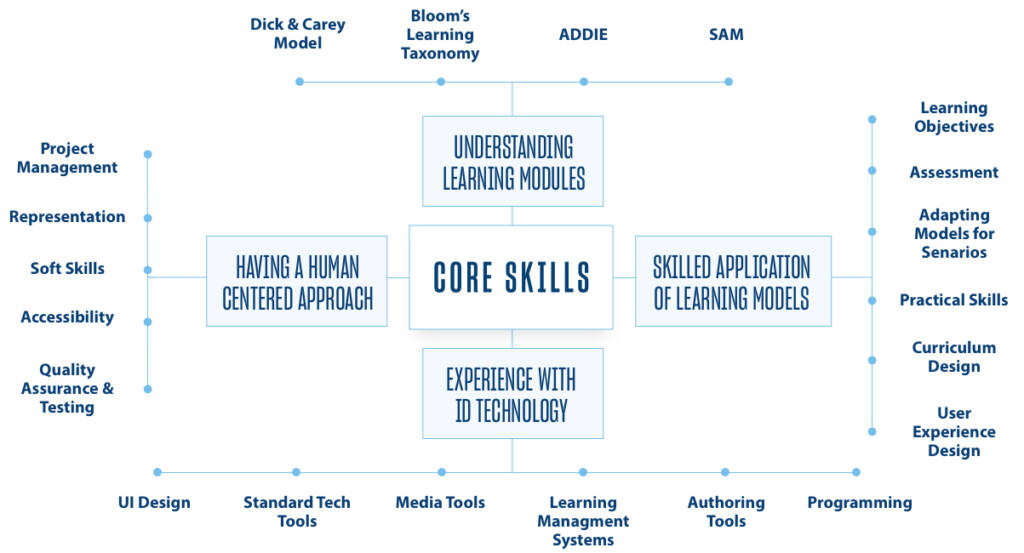
How to Make Your ID Skillset Standout to Employers
Establishing those core skills is just the starting point for your ID career. Showcasing your skills and experience to employers not only helps you land a job but is also essential for your professional development and building confidence in your skills.Whether you’re updating your resume or discussing your qualifications in interviews, here are the most important ways to stand out as an instructional designer.
- Highlight an area of specialization — Focusing your studies on areas you’re the most passionate about — or are most talented in — can build a specialization that helps you stand out from the crowd. Perhaps you excel in content writing and developing course materials or are more skilled at graphic design and video editing. Whether you see yourself as a project manager or eLearning developer, showcase the experiences that align with your professional identity.
- Have projects or actual courses you can share to demonstrate your experience — Having a well-rounded portfolio not only showcases your work and highlights successes, but it also outlines how you’ve learned from missteps and overcome difficulties. Demonstrating your approach to ID is the most impactful way to position yourself as a learning designer. You can get a head start on your portfolio by attending programs that offer you the opportunity to develop a body of work as part of a capstone project.
- Research the specific requirements of an employer — Organizations will have different requirements and expectations for their employees. Some may desire mastery of specific tools or programs, and others could require working experience within an industry. Research each employer’s needs to know which skills to highlight throughout your interactions with prospective employers.
- Target specific keywords related to job requirements — This tip is mainly for job searches and writing your resumes. Knowing the industry “keywords” that matter to employers is helpful during interviews and other interactions. Job search sites like Indeed offer valuable insights on understanding job postings and utilizing essential keywords.
- Have a strong network you can reference — Nothing opens doors faster than an excellent reference. Who you know in instructional design and how much they’re willing to vouch for your skills and abilities helps amplify and validate your experience. The connections you form within jobs and higher ed programs are resources you can draw upon throughout your career.
Building Your ID Skillset with USD LDT
The best learning and instructional design programs teach you a combination of theory and practice for both the application of learning design and the implementation of technology. The University of San Diego’s Learning Design and Technology (LDT) program was designed to help aspiring instructional designers develop and refine all of the important core skills.
The fully online LDT program is ideal for current professionals working in education or training or those considering a career change to more intentional work with learning design. Throughout the 20-month program, you will:
- Create a peer-evaluated portfolio project you can use to showcase your skills
- Enjoy hands-on experience with important tech tools like the Articulate 360 suite of programs
- Develop practical experience in employing learning models and developing instructional design competencies
Plus, you’ll build a professional network that will support you in your lifelong learning as an instructional designer. Contact us for more information about our program.
Instructional Designer Skills FAQ
References
- John Nworie, “The Increasing Quest for Instructional Designers and Technologists” in Higher Education and Corporate Settings, Contemporary Educational Technology, 2022, 14(1). retrieved from https://www.cedtech.net/download/the-increasing-quest-for-instructional-designers-and-technologists-in-higher-education-and-corporate-11481.pdf

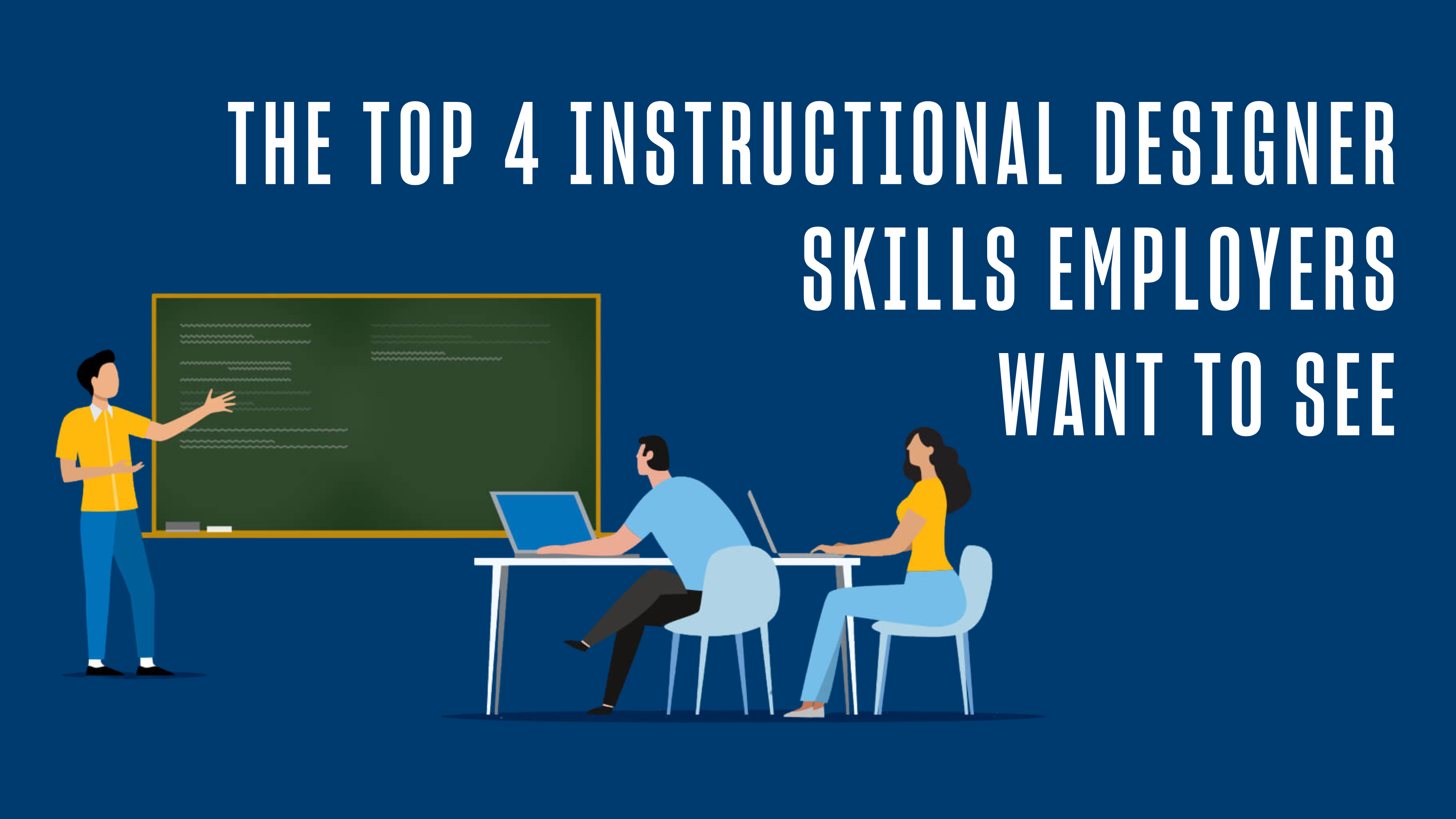
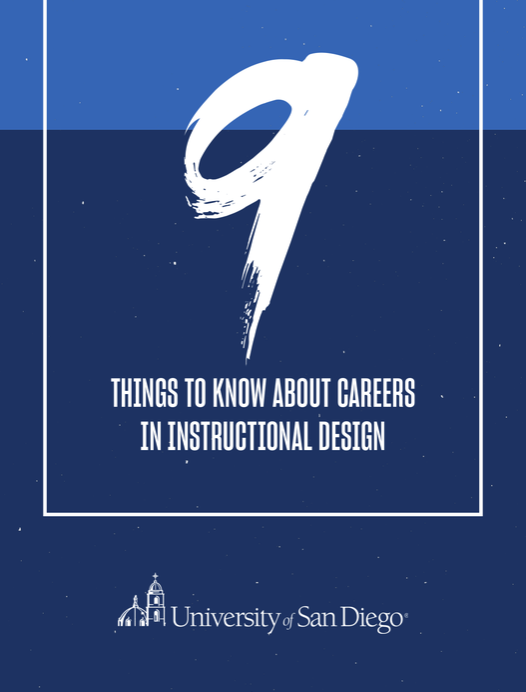
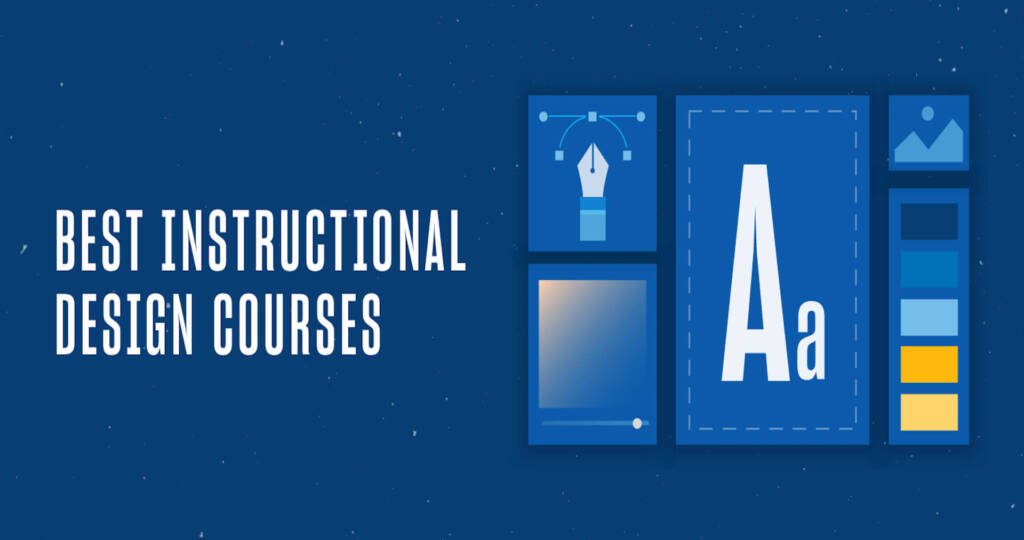
![What Does an Instructional Designer Do? [Career Info & FAQs]](https://onlinedegrees.sandiego.edu/wp-content/uploads/2021/08/ldt_blog_whatdoesiddo-1024x576.png)
